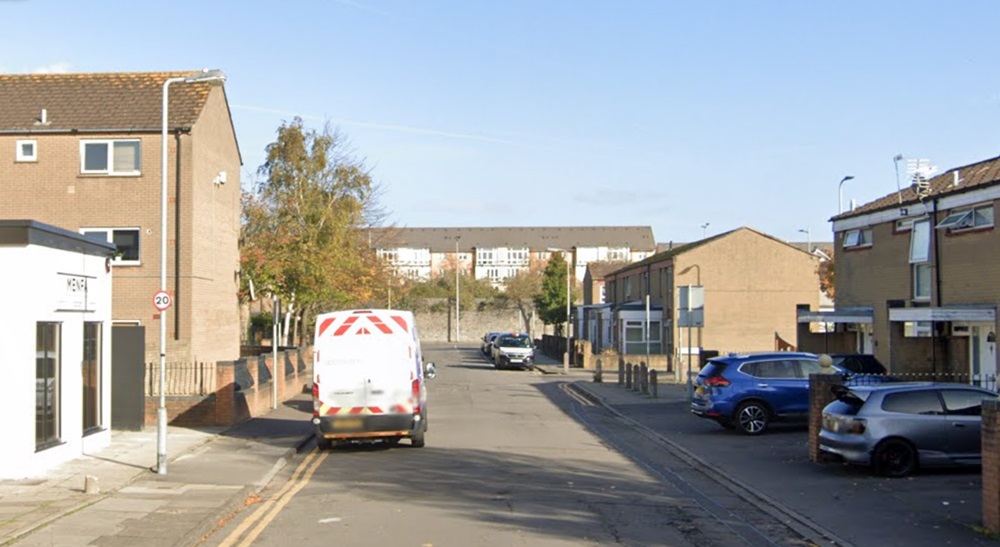The women of Maria Street

Norena Shopland
The Welsh Women’s Peace Petition 1923/1924, comprising almost 400,000 signatures, in an effort to appeal for world peace, has been written about in Nation Cymru by Jennifer Mathers, Catrin Stevens and myself. However, it is worth taking another look at how this vast collection of names can be used to understand local history.
Many of the Petition names are common to Wales/UK, and while they cannot provide evidence of ethnicity, in some areas we can use names as clues to look deeper.
The arrangement of signatories by streets means we can look at certain locations, and so a single, unremarkable road, Maria Street, west of Bute West and East Docks, Butetown, Cardiff was selected as it has a reasonable run of signatures, 43 women and 3 men, out of 45 houses.

There are no single data sets to consult for 1923/4, so the 1921 Census was examined along with the 1939 Register of England and Wales. The 1931 census was destroyed in a fire during World War II, and no census was taken in 1941 due to the war.
Identity card
The 1939 Register was compulsory, as from this people would receive an identity card and a ration book, and it was compulsory to carry the card until 1952.
By comparing the two data sets, we can try and find out what happened to the women of Maria Street.
Cardiff, in 1921, had a population of 299,731 (today c.400,00) and, because of World War I, females outnumbered men by 1.5%. The average household was three people but in Maria Street it was 4.5% probably due to living in the docks area.
Of the 43 women, 5 were not able to yield any details due to the vagueness of the signatory, such as A. Said (No.40) or Mrs A. Ali (No.41) and, at 11 houses there was nobody in to sign the petition, or they refused.
The women’s average age was 37, today it’s 40-41. The youngest was Martha Lavinia Houlston (No.36) at 16 and the oldest Margaret Sully (No.6) at 70 originally from Machen who worked in a drapery shop.
Margaret was in the minority of women who had a job. The most common female occupation was ‘Unpaid Domestic Duties’ namely housekeeping, and explains why so many answered the door. Although, some women did housekeep for others; M. Pittman (No.21) was a domestic servant for Thomas Powell, and Kate Courtney (No.22), was housekeeper to a Jamaica sailor, around the corner in Stuart Street.
Some worked in family businesses, Amy Jane Pow (No.43) and husband William were butchers, and Gwendoline Johnson (No.31) with Swedish husband Daniel, were grocers.
Annie Reierson (No.20) was a sack repairer at Spillers & Bakers, and Celsa Phillips (No.44) was a ‘wardrobe peddler,’ someone selling clothes door-to-door.
Privacy
Privacy was an almost unknown concept for working class people in the 1920s, and many took in boarders to increase income, not surprising in a dock area, and the 3-bedroom terrace houses of Maria Street averaged six boarders. Elizabeth Pacheco’s (No.15) were from Aden and Japan; Edith Rodrigues (No.18) had boarders from St Vincent; while Amy Ahmed’s (No.30) were from Aden, Somaliland, and Khartoum.

Three of the houses were registered boarding houses, and the census lists 471 people in the area who were boarding house keepers. Mary Kassien (No.24) from Corsica, and her husband Abdullah from Aden had 12 boarders all seamen from Aden and all out of work, presumably waiting for a berth. Gertrude Fettah (No.45) from Cardiff and Mahomed from Egypt had 13 boarders from Egypt, Aden and Somaliland.
Sometimes a house was split into different living quarters; Rose Craven (No.6), her husband and daughter lived with Margaret Sully and her daughter and 3 boarders; while most boarders in the street were men, here there were two women —Mary Saleh from Chester, a general servant at Micke Boarding House, 185 Bute Road; and Amy Jacob from Tonypandy, who worked for Ale Hirene at No.7.
At No.20 Annie Reierson split the house with a couple, Charlotte and Louis Riella. Annie’s family cousin, Annie Reynolds from Cardiff, a machinist at Del Guerra Oilskin Manufacturing Company in Bute Street, lived with them.
Where the birth place is known, most of the women, 21 out of the 43, were from Wales (including 11 from Cardiff), 6 from England, with only 1 born outside the UK, Mary Kassein (No.24) from Corsica. The opposite is found for the husbands, only 2 came from Cardiff, and none from wider Wales, 3 from England; 1 from Scotland and 1 from Ireland, with the others from Aden (3), Egypt (2), Poland (2), and 1 each from Cape Verde, Chile, Jamaica, and Sweden.

From the 1921 census to signing the 1923/4 peace petition, 24 were at the same address, but by 1939 only Elizabeth Pacheco (No.15), Mrs Ernest (No.32) and Mrs F Ahmed (No.35) were still there.
Obviously, this is only a snapshot of these women’s lives, but it opens the door to more research into the women of Maria Street.
Support our Nation today
For the price of a cup of coffee a month you can help us create an independent, not-for-profit, national news service for the people of Wales, by the people of Wales.





Very interesting.
Chasing my family tree and one thing from the census that hit home is the number of children born then counted as surviving at the time of the particular census, and then burial records with child and mother together. Then you come across the work house records and it gets worse.
Interesting. l worked as a social worker in the Cardiff Royal lnfirmary in the 1960s before these terraces were knocked down. There was a landlady called Sally Gomez who would accommodate several of our homeless men to facilitate their discharge from hospital. She owned a lot of these properties and l used to communicate with her on a regular basis.